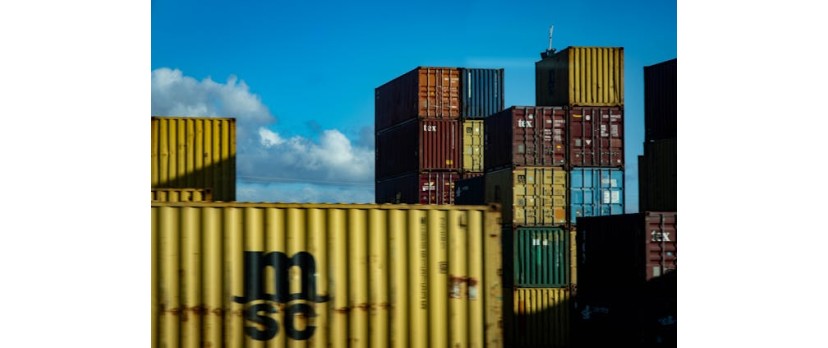Imagine goods delayed or spoiled during shipping. It's a nightmare for any business. Many companies face huge losses and unhappy customers because of outdated logistics and energy systems.
Did you know AI can predict supply chain issues before they happen? In fact, 61% of executives report reduced costs and 53% report increased revenues as a result of AI adoption in supply chain operations, according to a report by McKinsey & Company.
This blog will explore how advanced tools solve these problems. You'll learn ways to improve efficiency while saving costs. Ready to explore smarter solutions? Keep reading!
Transforming Logistics with Edge AI Technologies
AI is reshaping logistics by sharpening decision-making and speeding up processes. It bridges gaps in supply chains, turning chaos into clarity.
Real-time decision-making and enhanced efficiency
Smart systems now process logistics data in seconds. Operators adjust routes, manage inventory, and predict demand instantly. A delivery delay? The system reroutes to avoid traffic or weather disruptions without manual input. Custom logistics software development plays a critical role in enabling these intelligent systems to meet the specific operational demands of modern supply chains.
Faster decision-making reduces downtime and saves costs for businesses.
High-speed processing also slashes wasted resources. Warehouses monitor stock levels accurately to prevent overstocking or shortages. Automated sorting accelerates order fulfillment.
This level of efficiency increases profitability while maintaining accuracy at every step of the supply chain.
BytePlus ModelArk and its impact on supply chain management
Edge AI tools excel at making real-time decisions. BytePlus ModelArk improves supply chains by simplifying complex forecasting tasks. It uses machine learning to predict demand shifts, reducing overstocking or shortages.
Businesses using this tool enhance inventory management and cut costs effectively. Faster analysis ensures smoother operations during high-demand seasons.
BytePlus also improves route planning in logistics networks. Its algorithms adjust deliveries based on weather or traffic disruptions. This adaptability keeps shipments on schedule while trimming fuel expenses.
As one logistics manager shared:.
ModelArk turned our distribution network into a highly efficient system.
Such accuracy is reshaping modern supply chain management for better efficiency and reliability.
Autonomous Systems in Logistics
Machines are taking control, and they're not hesitating. More intelligent systems now manage tasks humans once found challenging.
Intelligent automation and predictive analytics
Intelligent automation improves routine tasks in logistics. Robotic Process Automation (RPA) enhances warehouse operations, reducing human error and increasing efficiency. Predictive analytics advances this further by forecasting demand, identifying potential delays, and suggesting alternative routes in real-time.
Supply chains become more efficient with AI-driven algorithms. Businesses can rely on these tools to predict inventory needs or monitor assets during transit. This minimizes wasted resources and reduces unnecessary costs.
Overcoming logistical challenges with autonomous solutions
Autonomous solutions are reshaping how businesses approach logistics. They are making complicated supply chains faster and more efficient.
Machines like self-driving trucks reduce human error. They also cut delivery times by keeping operations running continuously.
Automated drones handle deliveries in hard-to-reach places. They accelerate the process while lowering costs.
Robots work inside warehouses to sort, pack, and move inventory quickly. This increases productivity and reduces labor expenses. Services like ShipExpert courier service also support businesses by providing flexible, affordable shipping options tailored for small business needs.
Predictive analytics help anticipate issues before they happen. For example, it alerts about delays or low stock levels early.
Route planning tools improve delivery schedules for fleets on the road. This ensures fewer detours and lower fuel usage. This ensures fewer detours and lower fuel usage. To support accurate tracking of distance traveled, many fleet operators still rely on a mileage log template alongside automated systems to ensure record-keeping compliance and operational transparency.
Intelligent sensors monitor cargo conditions during transit. This prevents losses caused by damage or spoilage.
Technology is advancing cold chain logistics like never before!
Innovations in Cold Chain Logistics
Cold chain logistics protects temperature-sensitive goods like a fortress guards its treasures. Smart tech now keeps perishable items safe and delivers results with precision.
IoT for temperature control and supply chain visibility
IoT sensors monitor and control temperatures for goods like vaccines, seafood, and produce. These intelligent devices quickly detect any changes that could spoil items during transit.
Alerts sent instantly help resolve issues promptly, minimizing losses.
Tracking systems offer full visibility into supply chains. Business owners can view the location of shipments or identify delays on dashboards. This degree of transparency lowers risks and improves planning for perishable products.
AI-driven predictive analytics improves cold chain efficiency for managing perishables effectively.
AI-powered predictive analytics for perishable goods
AI analyzes historical data, weather patterns, and supply chain trends to predict shelf life more precisely. These insights help modify inventory levels and prevent overstocking, reducing waste in perishable goods.
Retailers can improve transport routes and storage conditions based on real-time analysis. This results in a fresher product selection while lowering costs linked to spoilage.
Advancing Energy Solutions with Technology
Smarter tools are reshaping how we harness and manage energy. Tech-driven strategies now tackle challenges in renewables and resource efficiency head-on.
IoT and AI in renewable energy optimization
Sensors in IoT networks gather real-time data from solar panels, wind turbines, and other renewable systems. According to the International Energy Agency (IEA), digital technologies like AI and IoT could reduce energy consumption in certain sectors by up to 10%, while optimizing renewable energy systems through real-time data and predictive modeling.
Businesses can apply this insight to adjust operations instantly, reducing waste and enhancing overall performance. These tools help align energy supply with demand more effectively.
AI algorithms also examine weather patterns to predict renewable output. This enables companies to organize grid usage efficiently while minimizing dependence on non-renewable sources during shortages. Tools like 60Hertz for maintenance management help streamline equipment upkeep in remote energy sites, ensuring uninterrupted performance.
For example, predictive analytics can help in redistributing loads when solar or wind production declines unexpectedly. Such accuracy aids in cutting costs and supports sustainable energy goals over the long term.
ESG solutions for subsurface diagnostics and actionable insights
ESG tools analyze underground data to enhance energy strategies. These solutions detect environmental risks, ensuring responsible resource management. Companies can adopt this technology to reduce waste and anticipate extraction challenges.
AI-driven models offer more precise imaging of subsurface conditions. This allows quicker decision-making in areas like drilling or geothermal energy development. Businesses gain clearer insights while protecting the environment.
Conclusion
Global logistics and energy industries are shifting gears with advanced technologies. More intelligent systems now bring speed, precision, and insight to the table. From enhanced warehouses to cleaner energy solutions, progress is undeniable.
Businesses adopting these advancements stay ahead in this fast-paced world. The future looks promising for those who adapt today.


Login and write down your comment.
Login my OpenCart Account